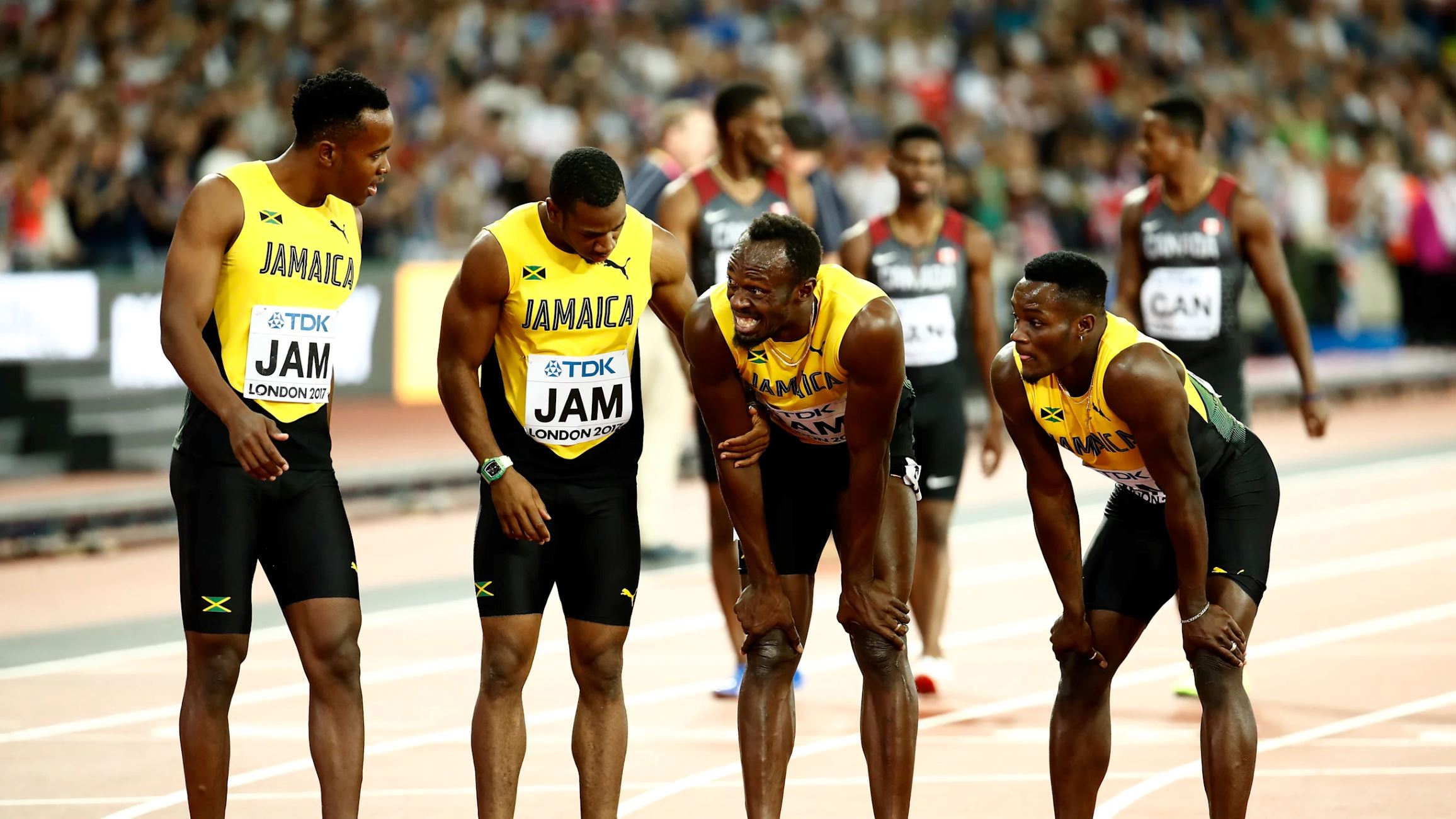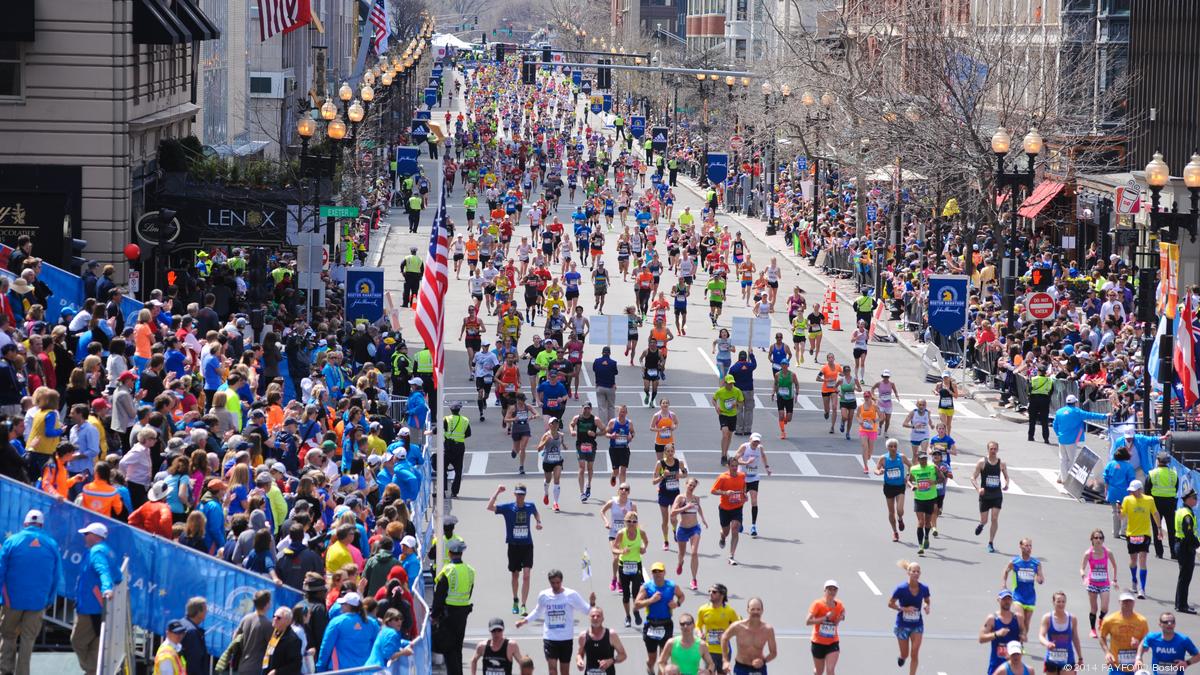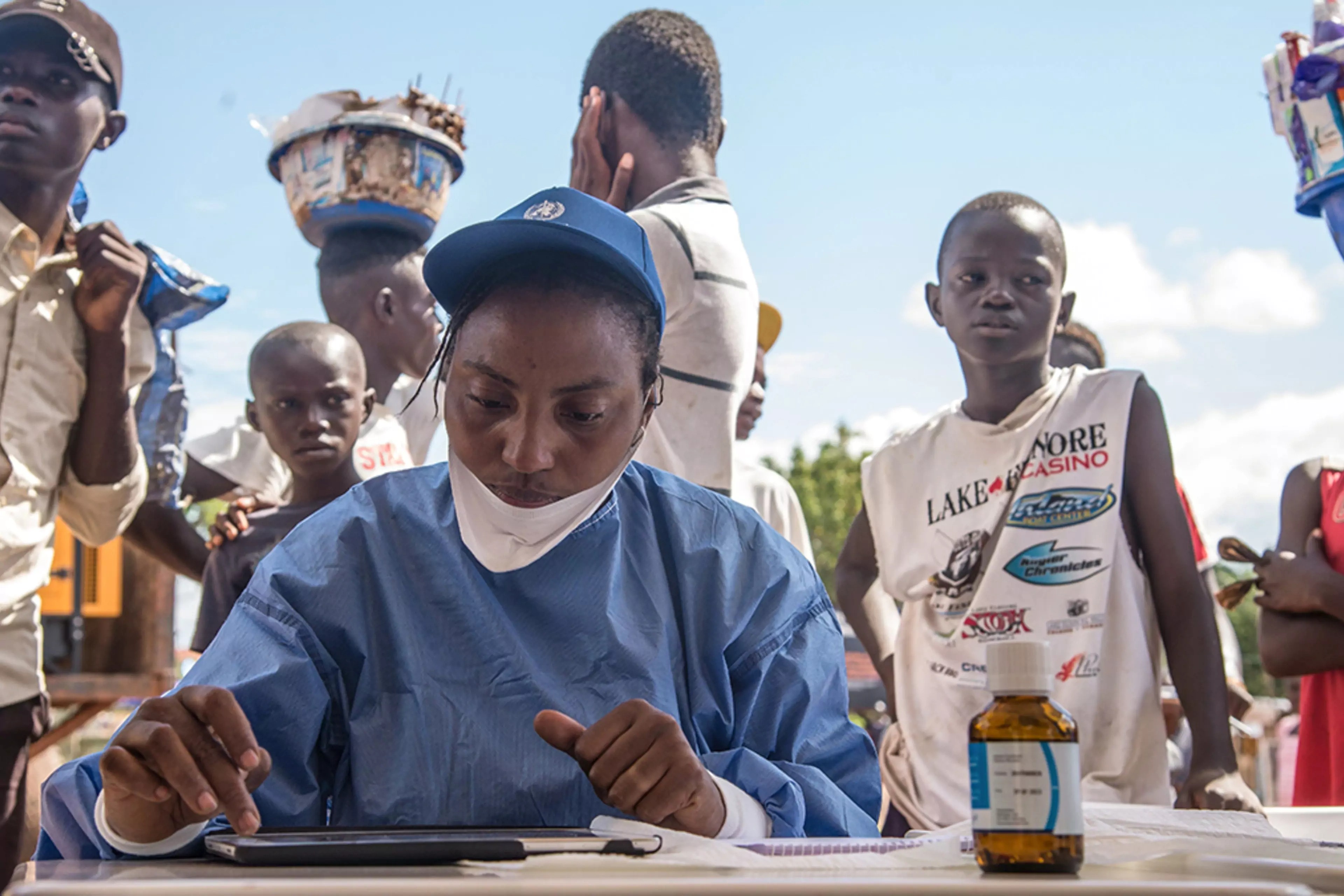

Featured
When Can You Workout After Covid
Modified: January 2, 2024
Find out when it's safe to resume your workout routine after recovering from Covid-19. Get expert advice and guidelines on exercising post-Covid.
Introduction
Welcome to the fascinating world of fitness and exercise! If you are reading this article, chances are you have recently recovered from COVID-19 and are eagerly looking forward to resuming your exercise routine. First and foremost, congratulations on overcoming the virus and regaining your health.
COVID-19 has had a profound impact on our lives, affecting not only our physical health but also our mental and emotional well-being. As restrictions start to ease and life returns to a semblance of normalcy, it is essential to approach post-COVID exercise with caution and diligence. Understanding how the virus can affect our bodies and the necessary steps to recover and recondition ourselves is vital.
In this article, we will discuss the physical recovery process after COVID-19 and provide guidelines on when and how to safely return to exercise. While we aim to provide helpful information, please keep in mind that every individual’s experience with COVID-19 may vary, and it is always recommended to consult with your healthcare professional before embarking on any exercise program.
Now, let’s dive into the world of post-COVID exercise and explore the best practices to ensure a safe and effective return to your fitness routine.
Understanding COVID-19
Before we delve into the topic of exercising after COVID-19, it’s important to have a basic understanding of the virus itself. COVID-19, caused by the novel coronavirus SARS-CoV-2, primarily affects the respiratory system. However, it can also affect different organs and systems in the body.
The symptoms of COVID-19 can range from mild to severe and may include fever, cough, shortness of breath, fatigue, body aches, loss of taste or smell, and sore throat. Some individuals may experience more severe symptoms, such as difficulty breathing or persistent pain or pressure in the chest. It is crucial to note that the severity of symptoms can vary greatly among individuals.
Recovering from COVID-19 involves not only overcoming the acute illness but also addressing the potential long-term effects. Some individuals may experience post-viral complications, such as persistent cough, fatigue, joint pain, or cardiovascular issues. It’s important to be aware of these potential complications and adjust your exercise routine accordingly.
Another crucial aspect to consider is the impact of COVID-19 on lung function. The virus can cause inflammation and damage to the lungs, leading to decreased lung capacity and endurance. This makes it even more important to approach exercise after COVID-19 with caution and gradually build up your fitness levels.
Furthermore, it’s important to note that individuals who have experienced severe cases of COVID-19 or have pre-existing health conditions may require additional medical attention and guidance before resuming physical activity. It is highly recommended to consult with your healthcare provider to assess your specific case and receive personalized advice.
Overall, understanding the potential impact of COVID-19 on your body and being aware of the long-term effects is crucial in designing a safe and effective exercise plan. Let’s now explore the process of physical recovery after COVID-19.
Physical Recovery After COVID-19
Recovering from COVID-19 involves more than just clearing the virus from your system. It also requires allowing your body to heal and regain its strength and endurance. The duration of physical recovery can vary from person to person, depending on the severity of the illness and individual factors.
During the acute phase of the illness, your body goes through significant physiological changes in order to fight off the virus. This can lead to muscle loss, decreased cardiovascular fitness, and reduced lung capacity. It is important to give your body the time it needs to recover and slowly rebuild your strength.
As you start to recover, it’s essential to focus on rebuilding muscle mass and restoring cardiovascular fitness. This can be achieved through a combination of light resistance training, aerobic exercise, and flexibility exercises. However, it is crucial to start slowly and gradually increase the intensity and duration of your workouts.
Physical therapy can be immensely helpful during the recovery process, especially for individuals who experience lingering symptoms or post-viral complications. A trained professional can guide you through specific exercises and techniques to regain strength, improve mobility, and address any lingering issues.
It is important to listen to your body during the recovery process. If you experience any pain, excessive fatigue, or other unusual symptoms during or after exercise, it’s essential to slow down and modify your routine accordingly. Pushing yourself too hard can hinder the recovery process and potentially lead to further complications.
Lastly, it’s worth mentioning the importance of a balanced approach to recovery. Along with exercise, focus on getting adequate rest, maintaining a healthy diet, and managing stress to support your body’s healing process. A holistic approach to recovery will help optimize your physical well-being and aid in the restoration of your pre-COVID fitness levels.
Now that we have discussed the physical recovery process after COVID-19, let’s move on to the guidelines for safely returning to exercise.
Guidelines for Returning to Exercise
Returning to exercise after recovering from COVID-19 requires a gradual and cautious approach to ensure your safety and well-being. Here are some essential guidelines to consider:
- Consult with your healthcare provider: Before resuming any physical activity, it is crucial to consult with your healthcare provider. They can assess your specific situation and provide guidance based on your individual recovery process.
- Assess your readiness: Evaluate how you feel physically and mentally before starting any exercise routine. Take into consideration any lingering symptoms or fatigue you may still experience. Start with gentle movements and gradually increase the intensity as you feel more comfortable.
- Start with low-impact exercises: Begin with low-impact exercises such as walking, swimming, or stationary cycling. These activities put less stress on your joints and cardiovascular system, allowing you to ease back into your routine without overexertion.
- Gradually increase intensity and duration: As your strength and endurance improve, slowly increase the intensity and duration of your workouts. Pay attention to any signs of fatigue or discomfort, and adjust accordingly.
- Practice proper warm-up and cool-down: Warm-up before each exercise session to prepare your muscles and cardiovascular system. This can include light stretching and mobility exercises. Similarly, make sure to cool down and stretch after your workout to promote muscle recovery and flexibility.
- Stay hydrated: Proper hydration is always important during exercise, but it becomes even more crucial during recovery. Adequate hydration supports your body’s healing process and helps prevent muscle cramps and fatigue.
- Listen to your body: Pay attention to any signs or symptoms your body may be signaling. If you experience excessive fatigue, dizziness, shortness of breath, or chest pain, stop exercising and consult with your healthcare provider.
- Modify high-intensity workouts: If you were previously engaged in high-intensity exercises, consider modifying them initially. Reduce the intensity, duration, or frequency to avoid putting excessive strain on your body. Slowly increase the intensity as your fitness levels improve.
- Don’t forget mental well-being: COVID-19 affects not only the body but also mental well-being. Incorporate stress-reducing activities such as meditation, yoga, or mindfulness practices into your routine to support your overall recovery.
By following these guidelines and taking a gradual approach, you can safely and effectively return to your exercise routine after recovering from COVID-19. Remember, every individual’s recovery process is unique, so listen to your body and make adjustments as needed. Now, let’s explore how to assess your readiness for exercise after COVID-19.
Assessing Your Readiness
Assessing your readiness to return to exercise after recovering from COVID-19 is an important step in ensuring a safe and effective transition back into physical activity. Here are some factors to consider when evaluating your readiness:
- Physical symptoms: Take note of any lingering physical symptoms you may still be experiencing, such as fatigue, shortness of breath, muscle weakness, or chest pain. It’s important to give your body enough time to recover and wait until these symptoms have significantly improved.
- Energy levels: Pay attention to your energy levels throughout the day. If you find yourself easily fatigued or lacking the energy to perform everyday tasks, it may be an indication that your body is not ready for intense exercise yet.
- Stress levels: Consider your stress levels and emotional well-being. While exercise can be a great stress-reliever, pushing yourself too hard physically may add unnecessary stress to your body. Ensure that you have a good balance between exercise and activities that promote relaxation and stress reduction.
- Sleep quality: Adequate rest and quality sleep are crucial for the recovery process. If you’re experiencing difficulties with sleep or experiencing excessive fatigue, it may be a sign that your body is still in the healing phase and needs more time before returning to exercise.
- Recovery timeframe: Every individual’s recovery process from COVID-19 is unique. It’s important to recognize that there is no set timeframe for when you can safely return to exercise. Listen to your body and give yourself the time needed to recover fully.
- Consult with healthcare provider: It’s always beneficial to consult with your healthcare provider before starting or resuming any exercise routine. They can provide personalized advice based on your specific situation, especially if you had a severe case of COVID-19 or have any underlying health conditions.
Remember that assessing your readiness for exercise after COVID-19 is not a one-time evaluation. It’s an ongoing process that may require adjusting your routine and intensity based on your body’s response. Take things gradually, be patient with yourself, and prioritize your overall well-being.
Now that we have discussed how to assess your readiness, let’s move on to the importance of resuming exercise gradually after COVID-19.
Resuming Exercise Gradually
After recovering from COVID-19, it’s crucial to approach exercise with a gradual and progressive mindset to ensure a safe and effective transition back into physical activity. Resuming exercise gradually allows your body to adapt and rebuild strength without overexertion. Here are some key considerations when resuming exercise after COVID-19:
- Start with light intensity: Begin with low-intensity activities such as walking, gentle stretching, or yoga. These activities help increase blood flow, improve flexibility, and promote overall well-being. Focus on maintaining proper form and alignment during these exercises.
- Monitor your heart rate and breathing: Pay attention to your heart rate and breathing while exercising. Aim for a moderate intensity where you can comfortably carry on a conversation. If you experience difficulties breathing or your heart rate becomes excessively elevated, slow down and reduce the intensity.
- Gradually increase duration and intensity: Slowly increase the duration and intensity of your workouts as your fitness levels improve. Add a few minutes to your exercise sessions every week and progressively introduce more challenging movements or resistance. Listen to your body and make adjustments accordingly.
- Incorporate strength training: Include strength training exercises in your routine to rebuild muscle mass and improve overall strength. Start with lighter weights or resistance bands and gradually increase the load as you feel more comfortable. Focus on proper form and technique to prevent injuries.
- Alternate between workout days: Allow your body enough time to rest and recover between workouts. Consider alternating between workout days and rest days to avoid overtraining. Recovery is as important as exercise for achieving optimal results.
- Listen to your body: Pay close attention to any signs of fatigue, dizziness, or discomfort during or after exercise. If you experience any unusual symptoms, it’s important to stop and rest. Pushing through pain or discomfort can lead to further complications and hinder your recovery.
- Regularly reassess your progress: Regularly assess your progress and make necessary adjustments to your exercise routine. Consult with your healthcare provider or a qualified fitness professional to ensure you’re on the right track.
- Stay consistent: Consistency is key when it comes to regaining your fitness levels. Make exercise a regular part of your routine, but be flexible and adaptable to accommodate any changes that may occur during your recovery process.
Remember, everyone’s recovery process is different, and it’s essential to listen to your body’s signals and adjust your routine accordingly. By resuming exercise gradually, you can rebuild your strength and endurance safely and effectively.
Now, let’s explore some modifications you may need to consider for high-intensity workouts after recovering from COVID-19.
Modifications for High-Intensity Workouts
If you were engaged in high-intensity workouts before contracting COVID-19, it is important to approach these exercises with caution and make some modifications during the recovery period. Here are some considerations and modifications to keep in mind when returning to high-intensity workouts:
- Modify the intensity: Start by reducing the intensity of your high-intensity workouts. This can be done by decreasing the speed, resistance, or weight you typically use. Focus on gradually increasing the intensity over time as your fitness and energy levels improve.
- Shorten the duration: Begin with shorter workout sessions compared to what you used to do before. Aim for 10-15 minutes of high-intensity exercises and gradually increase the duration as you regain stamina and endurance. Quality over quantity is important during this recovery phase.
- Allow for more rest and recovery: Incorporate more rest periods between intervals or sets. Listen to your body and take longer breaks if needed to prevent excessive fatigue and give your body adequate time to recover.
- Focus on proper form: Pay close attention to your form and technique during high-intensity exercises. Ensure that you are performing movements correctly to minimize the risk of injury. Consider working with a certified fitness professional who can provide guidance and ensure proper form.
- Gradually increase repetitions: As you regain strength and endurance, gradually increase the number of repetitions you perform during each set or interval. Start with a lower number and increase gradually over time to avoid overexertion.
- Listen to your body’s signals: It is crucial to listen to your body during high-intensity workouts. If you experience excessive fatigue, dizziness, or shortness of breath, take a break and modify your routine if needed. Pushing through discomfort can hinder your recovery and potentially lead to further complications.
- Consider interval training: Interval training can be an effective way to gradually increase intensity while allowing for more rest and recovery periods. Alternating between high-intensity bursts and lower-intensity recovery periods can help build stamina and endurance gradually.
- Consult with a professional: If you have any concerns or doubts about modifying high-intensity workouts, it is recommended to consult with a fitness professional. They can provide personalized advice based on your specific recovery process and help design a modified program that suits your needs.
Remember, the goal during the recovery phase is to gradually rebuild your fitness levels and avoid overexertion. By making the necessary modifications and allowing yourself time to recover, you can safely reintegrate high-intensity workouts into your routine.
Now that we have discussed modifications for high-intensity workouts, let’s emphasize the importance of listening to your body during the recovery process.
Listening to Your Body
One of the most important aspects of returning to exercise after recovering from COVID-19 is listening to your body’s signals and responding accordingly. Your body is an incredible source of feedback and can provide valuable information about your physical readiness and limitations. Here are a few key points to consider when it comes to listening to your body:
- Pay attention to fatigue: Fatigue is a natural part of the recovery process. It’s essential to differentiate between the normal fatigue associated with exercise and excessive fatigue that may indicate overexertion. If you feel excessively tired, it’s important to give yourself extra rest and recovery time.
- Recognize signs of pain or discomfort: Pain or discomfort during or after exercise should not be ignored. It can be an indication of pushing too hard or improper technique. If you experience pain, especially in specific joints or muscles, it’s crucial to address the issue and modify your routine accordingly. Consult with a healthcare professional or qualified fitness trainer if needed.
- Monitor your breathing: Pay attention to your breathing during exercise. If you find yourself struggling to catch your breath or experiencing shortness of breath, it may be a sign that you are pushing yourself too hard. Slow down, take breaks, and gradually build up your cardiovascular endurance.
- Take note of your energy levels: Your energy levels can fluctuate during the recovery process. If you find yourself consistently lacking energy or feeling excessively fatigued, it may be a sign that you need more rest or a lighter workout. Remember, rest is an essential part of the recovery process.
- Consider overall well-being: Exercise is just one aspect of your overall well-being. It’s important to listen to your body’s needs holistically. Make sure you’re getting adequate rest, eating nutritious meals, and managing stress levels. Taking care of your mental and emotional health is just as important as physical fitness.
- Keep a journal: Keeping a workout journal can help you track your progress, as well as any pain, discomfort, or improvements you notice. This can provide valuable insights and help you make informed decisions about when to push harder or when to take it easy.
- Be patient and kind to yourself: Remember that recovery takes time and each person’s journey is unique. Practice self-compassion and be patient with yourself as you gradually rebuild your strength and endurance. Celebrate small victories along the way and acknowledge the progress you are making.
Listening to your body is a key component of achieving a sustainable and balanced approach to exercise after recovering from COVID-19. It empowers you to make informed decisions and tailor your routine to fit the specific needs of your body.
Next, let’s discuss the importance of seeking professional guidance and consultation when returning to exercise after COVID-19.
Professional Guidance and Consultation
Seeking professional guidance and consultation is highly recommended when returning to exercise after recovering from COVID-19. These experts can provide you with personalized advice, help you navigate the recovery process, and ensure your safety and well-being. Here’s why professional guidance is important:
- Expert knowledge and experience: Fitness professionals, physical therapists, and healthcare providers have a wealth of knowledge and experience in working with individuals who have recovered from illnesses. They can provide specific insights into how COVID-19 may have affected your body and tailor an exercise program that suits your needs.
- Individualized assessment: Professionals can conduct a thorough assessment of your physical condition, taking into account factors such as your overall health, level of fitness, and any lingering symptoms. This assessment helps in designing a safe and effective exercise program tailored to your specific situation.
- Guidance on exercise modifications: Professionals can offer guidance on modifying exercises to accommodate any limitations or lingering symptoms you may have. This ensures that you can exercise safely without exacerbating any issues.
- Monitoring progress: By working with a professional, your progress can be monitored closely. They can help you track improvements and make appropriate adjustments to your exercise routine as needed.
- Accountability and motivation: Having a professional on your side provides accountability and motivation. They can help keep you on track, offer support, and make adjustments to your routine to ensure you stay motivated and continue progressing toward your fitness goals.
- Preventing further complications: Professionals can identify any red flags or warning signs during exercise that may indicate the need for further medical attention. This ensures that potential complications are addressed promptly and prevents any further health risks.
- Addressing individual concerns: Each person’s experience with COVID-19 is unique, and concerns or challenges may vary. By seeking professional guidance, you can address any specific concerns or questions you have and receive personalized advice and solutions.
Whether it’s working with a personal trainer, physical therapist, or consulting with your healthcare provider, involving professionals in your fitness journey after COVID-19 can greatly enhance your overall experience and ensure optimal results.
Remember, professionals are there to support you, provide guidance, and help you navigate the recovery process safely. Don’t hesitate to reach out to them for assistance as you embark on your post-COVID exercise journey.
Now that we have discussed the importance of seeking professional guidance, let’s conclude our exploration of exercising after COVID-19.
Conclusion
Returning to exercise after recovering from COVID-19 requires a thoughtful and gradual approach. Understanding the impact of the virus on your body, assessing your readiness, and listening to your body’s signals are key factors in designing a safe and effective exercise routine. By following guidelines, resuming exercise gradually, modifying high-intensity workouts, and seeking professional guidance, you can ensure a smooth transition back into physical activity.
Remember that everyone’s recovery journey is unique, so it’s important to be patient and kind to yourself. Recovery takes time, and it’s crucial to prioritize your overall well-being. Pay attention to your body’s needs, including signs of fatigue, pain, or discomfort, and adjust your routine accordingly. Be consistent, stay hydrated, and focus on supporting your body’s healing process.
Consulting with healthcare professionals and fitness experts can provide valuable insights and individualized guidance, ensuring that you exercise safely and in a way that promotes your overall health. They can help you navigate any challenges or concerns you may have and monitor your progress along the way.
Recovering from COVID-19 is a significant accomplishment, and returning to exercise is an important step in regaining your strength, endurance, and overall well-being. Approach this journey with patience, perseverance, and a deep understanding of your body’s needs. With time and dedication, you will gradually rebuild your fitness levels and experience the joy and rewards of an active lifestyle once again.









